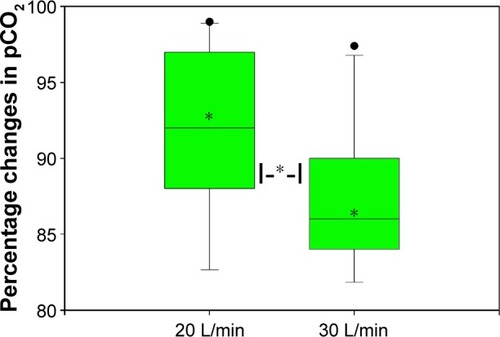Figures & data
Table 1 Demographic data
Table 2 Mean airway pressure – medium prong size
Figure 1 Changes in mean airway pressure (n=19, medium prong size).
Abbreviations: nBiPAP, (nasal) bilevel positive airway pressure; nCPAP, (nasal) continuous positive airway pressure.
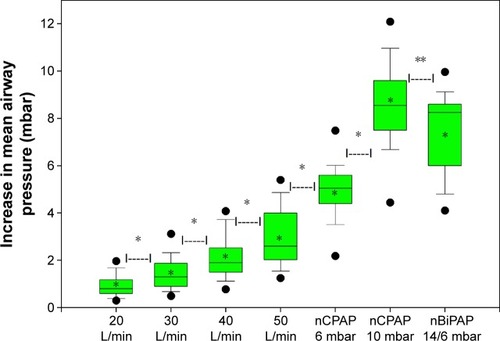
Table 3 Changes in ventilatory parameters
Figure 2 Percentage changes in tidal volume (n=18, medium prong size).
Notes: *Significant P-value and **no significant P-value.
Abbreviations: nBiPAP, (nasal) bilevel positive airway pressure; nCPAP, (nasal) continuous positive airway pressure.
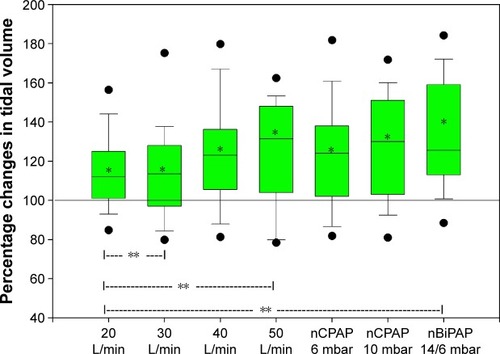
Figure 3 Percentage changes in breathing rate (n=18, medium prong size).
Notes: *Significant P-value and **no significant P-value.
Abbreviations: nBiPAP, (nasal) bilevel positive airway pressure; nCPAP, (nasal) continuous positive airway pressure.
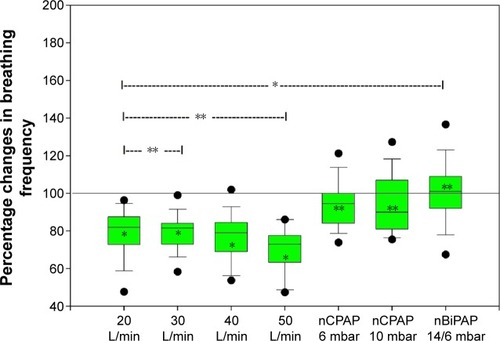
Figure 4 Percentage changes in minute volume (n=18, medium prong size).
Abbreviations: nBiPAP, (nasal) bilevel positive airway pressure; nCPAP, (nasal) continuous positive airway pressure.

Table 4 RSBI – medium prong size
Figure 5 Percentage changes in RSBI (n=18, medium prong size).
Abbreviations: nBiPAP, (nasal) bilevel positive airway pressure; nCPAP, (nasal) continuous positive airway pressure; RSBI, rapid shallow breathing index.
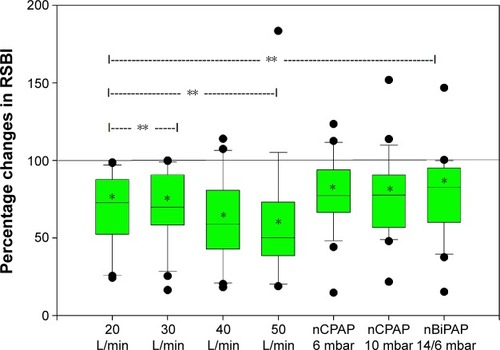
Table 5 Comfort/dyspnea scale
Table 6 pCO2 changes compared to baseline – medium prong size

